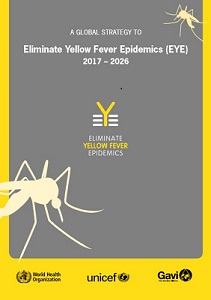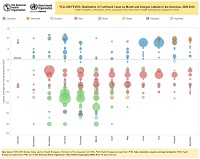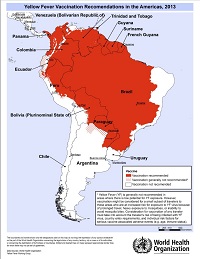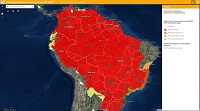Yellow fever is an acute viral haemorrhagic disease that is endemic in tropical areas of Africa and Latin America. Cases can be difficult to distinguish from other viral hemorrhagic fevers such as arenavirus, hantavirus or dengue. Symptoms of yellow fever usually appear 3 to 6 days after the bite of an infected mosquito. In the initial phase, they include fever, muscle pain, headache, shivers, loss of appetite, and nausea or vomiting. For most patients, these symptoms disappear after 3 to 4 days. However, 15% of patients enter a second, more toxic phase within 24 hours of the initial remission when high fever returns, and several body systems are affected, including the kidneys. Treatment is symptomatic, aimed at reducing symptoms for the comfort of the patient; vaccination is the most important preventive measure against yellow fever, is safe, affordable and highly effective, providing effective immunity within 30 days for 99% of those vaccinated. A single dose is sufficient to confer sustained immunity and life-long protection, with no need for a booster. More information for the general public
Highlights
 A global strategy to eliminate yellow fever epidemics (EYE) 2017–2026
A global strategy to eliminate yellow fever epidemics (EYE) 2017–2026
The global health community is facing an increased risk of urban outbreaks of yellow fever (YF). The risk of international spread, YF’s changing epidemiology and resurgence of mosquitoes pose an emerging global threat that requires new strategic thinking.
This document describes the reasoning behind and need for an updated, long-term (2017-2026) and global strategy to “Eliminate Yellow fever Epidemics” (EYE).
Click here to read the document.





